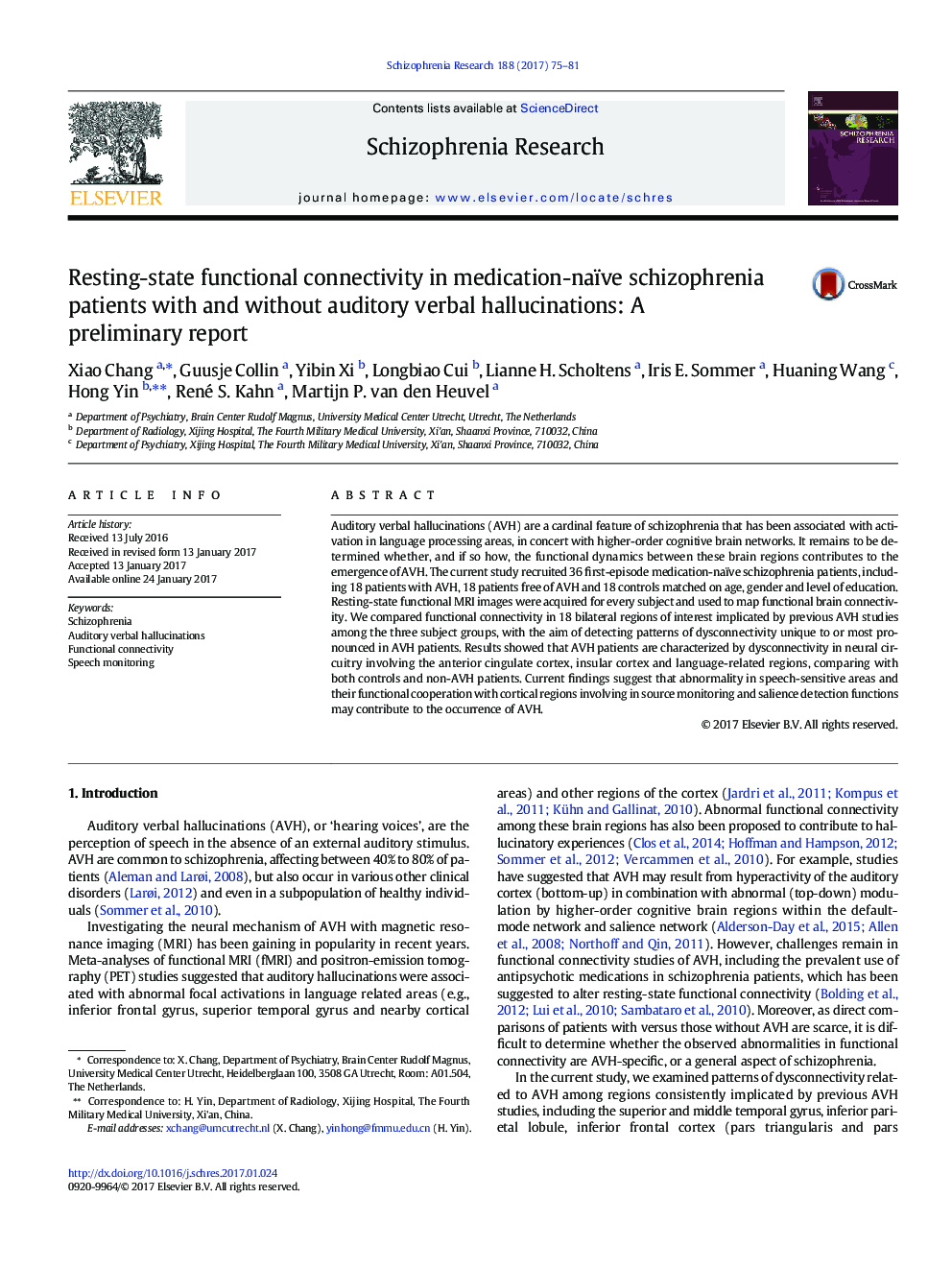| Article ID | Journal | Published Year | Pages | File Type |
|---|---|---|---|---|
| 4934850 | Schizophrenia Research | 2017 | 7 Pages |
Abstract
Auditory verbal hallucinations (AVH) are a cardinal feature of schizophrenia that has been associated with activation in language processing areas, in concert with higher-order cognitive brain networks. It remains to be determined whether, and if so how, the functional dynamics between these brain regions contributes to the emergence of AVH. The current study recruited 36 first-episode medication-naïve schizophrenia patients, including 18 patients with AVH, 18 patients free of AVH and 18 controls matched on age, gender and level of education. Resting-state functional MRI images were acquired for every subject and used to map functional brain connectivity. We compared functional connectivity in 18 bilateral regions of interest implicated by previous AVH studies among the three subject groups, with the aim of detecting patterns of dysconnectivity unique to or most pronounced in AVH patients. Results showed that AVH patients are characterized by dysconnectivity in neural circuitry involving the anterior cingulate cortex, insular cortex and language-related regions, comparing with both controls and non-AVH patients. Current findings suggest that abnormality in speech-sensitive areas and their functional cooperation with cortical regions involving in source monitoring and salience detection functions may contribute to the occurrence of AVH.
Related Topics
Life Sciences
Neuroscience
Behavioral Neuroscience
Authors
Xiao Chang, Guusje Collin, Yibin Xi, Longbiao Cui, Lianne H. Scholtens, Iris E. Sommer, Huaning Wang, Hong Yin, René S. Kahn, Martijn P. van den Heuvel,
